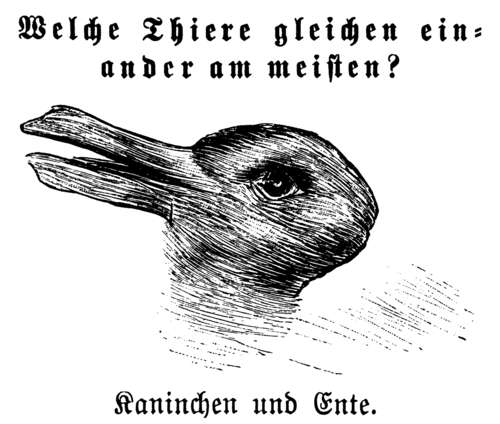Hidden Rules

The purpose of the See the One priority is to help cultivate a learning environment where all students can learn. One of the best ways to cultivate a learning environment of love, respect, and purpose is to come to know and love our students. Our students are unique in the ways that they think, act, and view the world. Often, these differences are outgrowths of the hidden rules by which they operate. This article will help you better understand what hidden rules are and how they influence students’ ideas and behaviors.
What Are Hidden Rules?
Take a look at the following optical illusions.
- What do you see?
- If you are near someone, ask them what they see. Did the two of you see different things?


Seeing things differently doesn’t mean that one person is right and the other wrong. Every individual has a unique lens through which he or she views and understands the world.
There are certain collective experiences that exist within a culture, religion, nationality, race, or group that can influence how we see the world. These are called hidden rules. “Hidden rules are the unspoken cues and habits of a group” (Ruby K. Payne, Philip E. DeVol, and Terie Dreussi Smith, Bridges Out of Poverty [2006], 39). Hidden rules are not always taught—they are the things that people just assume that everybody knows. For example, we know that within the Church, we call each other Brother and Sister. We grow up hearing it, and so we do it.
How Do Our Hidden Rules Influence How We See the World?
It’s common to think that others see the world and operate according to the same set of hidden rules as you do. However, factors such as socioeconomic status, religion, learning ability, and family dynamics shape the hidden rules by which we operate.
Let’s take a moment and examine how something like socioeconomic background could influence how people see and interpret the world. Please watch this video and then take a moment to answer these questions about socioeconomic groups.
Socioeconomic groups are just one example of how hidden rules affect how we interact with the world. To teach effectively, we must understand that our classrooms are filled with individuals who operate by many different hidden rules. We do not necessarily want to change their hidden rules to match ours, but rather we seek to understand their rules to better help us cultivate an environment of love, respect, and purpose. One set of rules isn’t better than another as long as those rules do not conflict with eternal truth.
How Can We Help Students Understand the Hidden Rules of Seminary and Institute?
Too often we expect students to come to class and understand what we are trying to do and what is expected of them. It’s important to recognize that some of our students don’t know and understand the hidden rules in our seminary and institute classes. Some may not understand them because they weren’t raised in our LDS culture. Others may not understand because they were raised in a place with a different educational culture (for example, perhaps students aren’t expected to actively participate and comment in class). Others may have disabilities that impact their learning experience.
Please read the following article: “Navigating the Social World: The Importance of Teaching and Learning the Hidden Curriculum,” (Autism Advocate 60, no. 3 [2010], 12–15). This article was written by Judy Endow, MSW, an individual with autism. Think of how you could connect with this individual and help her have a wonderful experience in your class.
Therefore, What?
We hope that this article helps you recognize that hidden rules govern so much of what we do. Hidden rules also affect the way we judge an individual’s capabilities and the type of student we think they are. These hidden rules can often influence how comfortable a student is with sharing in class, how they behave in class, and what they feel they are expected to do in class. As we seek to understand individual students and the hidden rules by which they operate, we will be more effective in teaching and establishing an environment of love, respect, and purpose where the Spirit can direct us.
Potential Inservice Ideas
- Identify as a faculty some of the hidden rules of seminary and institute. What are some things that we just expect students to know and understand?
- Watch the video and answer the questions about the hidden rules of different socioeconomic groups. Most educational institutions are based upon the hidden rules of the middle class. Discuss as a faculty any potential challenges that this could have for your students.
- Read the article “Navigating the Social World” together as a faculty. Discuss what you learned about the challenges of not understanding the hidden rules that are operating around you. What can you do as teachers to help all of your students understand the hidden rules of seminary and institute?